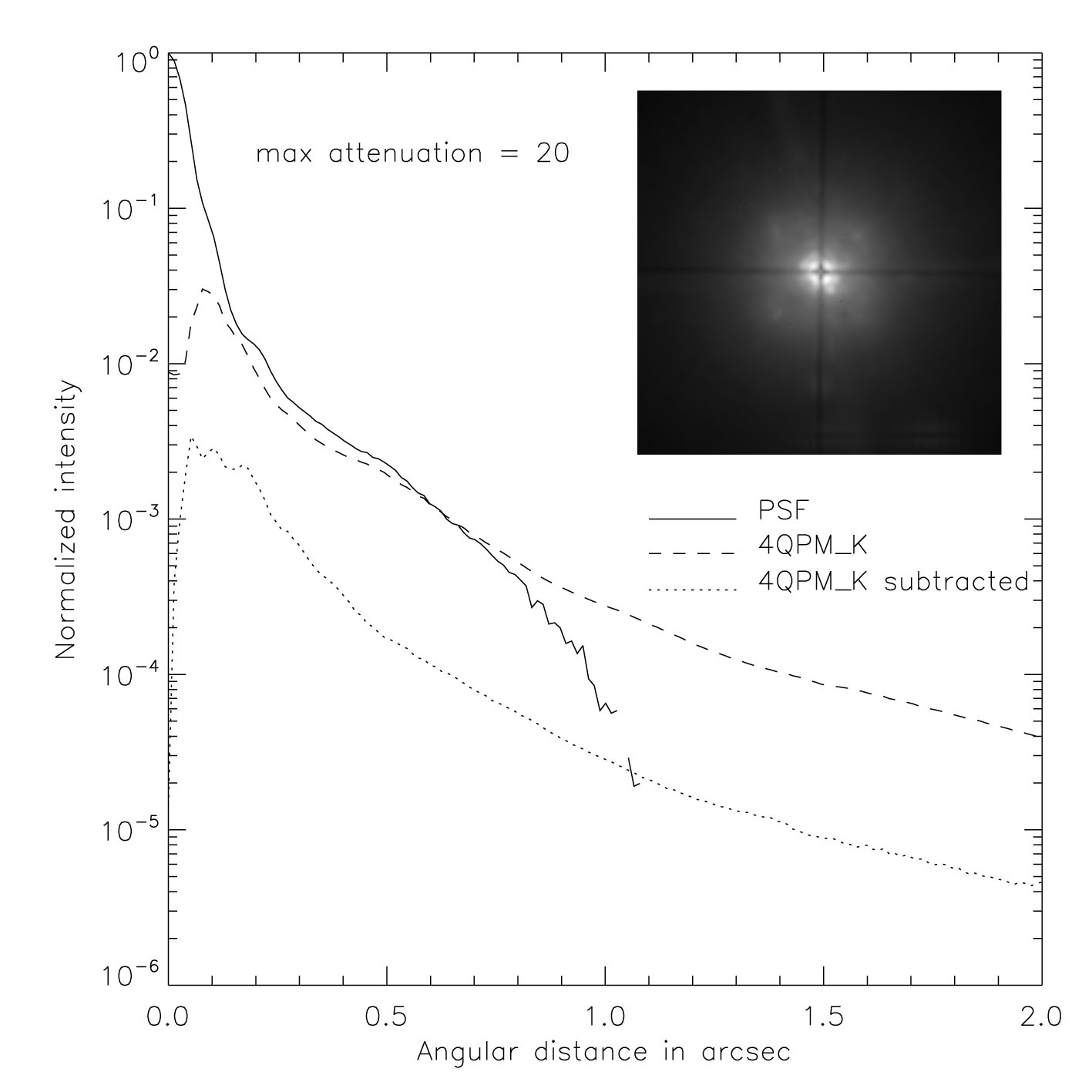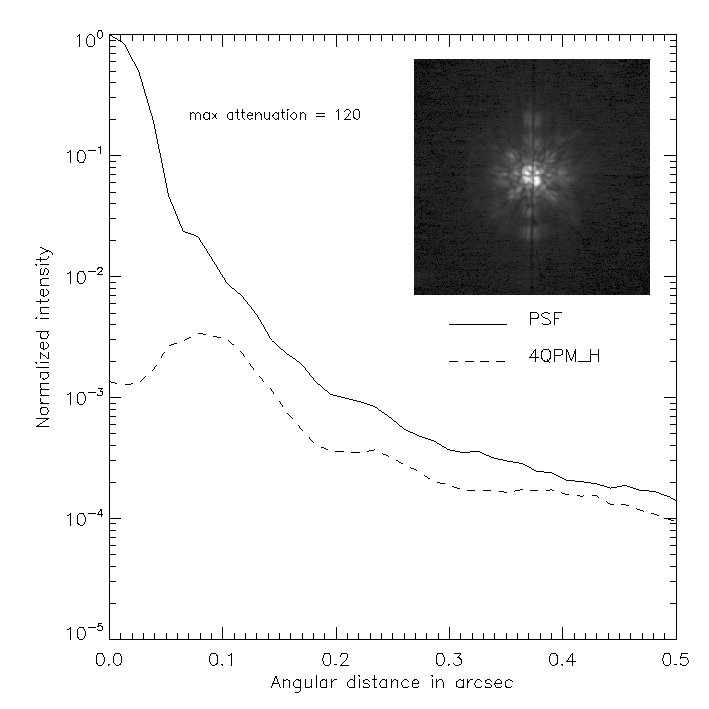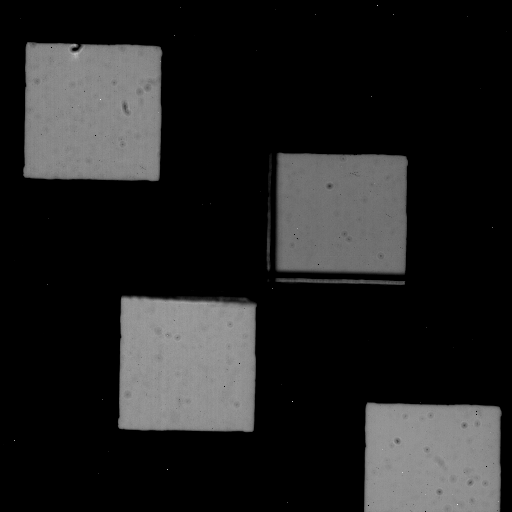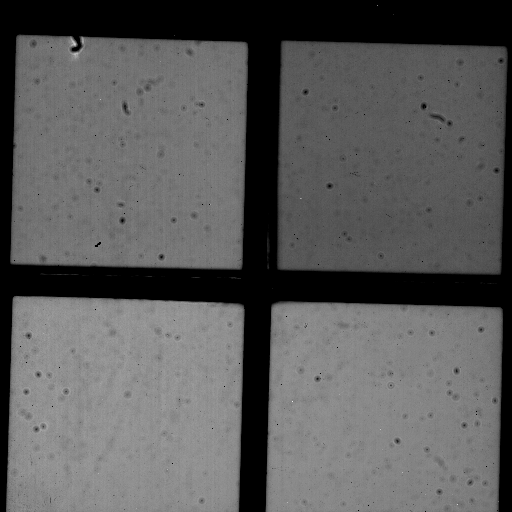Novelties in the Call For Proposal for P81
As of P81, the following guidelines are in place:
- A new mode, which combines SDI+ and 4QPM (in H), will tentativelybe offered in P81 in visitor mode only. Characterization of this modeis at this time not complete, further commissioning tests arescheduled for September, 2007. This mode is expected to improve thesearch for methane companions, like giant extra-solar planets aroundyoung stars. At the moment of writing, this mode is not fullycommissioned and characterized. but we expect to have it ready for thestart of P81. Preliminary results indicate that a contrast of ~20 canbe achieved (see example plot).
- For technical reasons, the Fabry-Perot mode is notoffered. Moreover, all modes that made use of chopping (imaging andpolarimetry in M' and coronagraphy with LW filters) are temporarilynot available.
As of P80 the following guidelines are in place:
- Imaging polarimetry with the Wollaston_45 is restricted to point sources,
due to the absence of the entrance mask, that used to mask out the field where the E- & O-vectors overlap.
- The semi-transparent coronographic mask cannot be used with the S13 camera anymore.
The mask has been re-aligned. As a consequence the 4 holes are placed at the 4 corners of the S13 field of view (FOV).
- The 4QPM mask has been removed.
- Two new four quadrant phase masks have been installed for coronography.
These new masks contain a small classical Lyot stop, of equivalent radial attenuation of 0.2", in their center.
One mask is optimised for K band and offers a field of view of13x13". The other mask is optimised for H band obseravtions and has a8x8" FOV.
For both masks, the peak to peak attenuation is of the order of100 on fiber and 20 on 'real' stars; which correspond to a gain of afactor of 2 compared to the old 4QPM mask.
- A new SDI has been installed. It uses the same camera and thus the same filters as the 'old' SDI.
Now each filter has a 8x8" FOV. This new mode uses a super-achromatic double Wollaston prism.
A first estimation of the performance shows that it provides similar results as the old SDI,
i.e. magnitude difference (at 1.575mu) of 10 at 0.5" and 11 at 1". Out of 2", one is read-noise limited.




